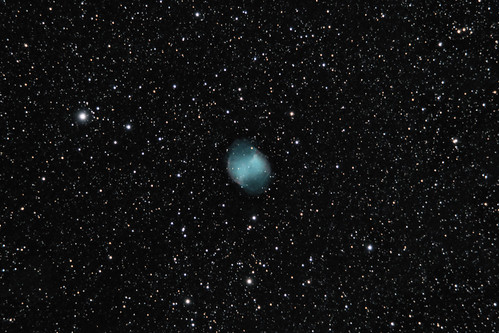14 -15 July 2018, 23:00 – 02:00 BST
A very clear night, if not completely dark; good enough to see 5th magnitude stars after dark-eye adaption, and the Scutum star-cloud with averted vision (although the latter seems to be more affected by light pollution than ever).
Saturn looked very impressive when I first pointed the telescope at it, with the usual moons in attendance and the Cassini Division visible most of the way around, but the seeing deteriorated rapidly as it passed the meridian. (Possibly due to warm air rising off the pond and the surrounding concrete.)
M39, open cluster in Cygnus
A sparse cluster of bright stars, spilling outside the edge of field of view even at 50x. Too loose and large for a big reflector; I wasn’t even sure I was looking at a cluster at first.
NGC 7062, open cluster in Cygnus
A grainy, fuzzy patch of nebulosity at 50x; starts to resolve at 133x. Faint stars.
NGC 6910, open cluster in Cygnus
A grouping of bright stars arranged in a kind of flattened Y-shape. Not rich, but well-framed at 50x. Quite pretty; would probably have greater appeal if it didn’t already reside in such a rich section of the Milky Way.
M29, open cluster in Cygnus
Boxy, like a mini version of the Pleiades. The extra aperture doesn't really add anything to this cluster that I hadn't already seen through the 4-inch.
NGC 7000, North America Nebula in Cygnus
Scanned region with Ultrablock, but too large for fov. Could tell that some areas were brighter than others but hard to distinguish nebulosity from the sheer number of background stars.
NGC 6888, Crescent Nebula in Cygnus
I spent a lot of time looking for this with the 4-inch and never convinced myself of seeing it, but I found it right away with the XT10 (Panoptic 24 mm + Ultrablock). Appeared as an elongated semi-circle of stars connected by bright streaks of nebulosity. Closer examination showed a faint haze filling the interior of the crescent, giving the impression of a baby wrapped in swaddling clothes, with a darker region where the face would be.
I left the Pan 24 and the Ultrablock in place and moved down to 52 Cygni and the Veil Nebula, supernova remnant in Cygnus: now high overhead and even more vivid than the previous sighting. The Witch’s Broom still looked like a frozen funnel cloud, a twisted spike of nebulosity extending beyond 2 fovs. The Eastern Veil showed more detail; both halves are very clearly “structured” nebulae, in that they have clearly defined edges as opposed to the more typical cloudy nebulae which just fade gently into the background sky.
M57, Ring Nebula in Lyra
Studied at 240x, with and without the Ultrablock filter. Holds its brightness well at high magnification in the XT10. Otherwise as per previous description. Slight green-grey colour.
M27, Dumbbell Nebula in Vulpecula
The "apple-core" took on a more boxy appearance at 240x. Distinct, sharp cut-off in brightness on one edge, and strong hints of structure within the nebula – most prominent being the diagonal bar commonly seen in photos like the one above.
M11, Wild Duck Cluster in Scutum
Not much I can add to the previous report. Just a fantastic cluster to look at in the XT10.
NGC 6712, globular cluster in Scutum
Stumbled upon this while sweeping south of M11. Fuzzy, circular blur at 50x, but starts to betray its true nature at higher magnification. Reminded me of M13 as seen in the smaller scope.
M15, globular cluster in Pegasus
Well resolved, very condensed core – more so than other globulars I’ve looked at. Definitely worth revisiting when it's higher in the sky. Nearby field stars really help frame this object at both 50x and 133x, giving it a 3D appearance.
NGC 7006, globular cluster in Delphinus
Small, circular blur. Relatively easy to see in the XT10, but no stars resolved.
NGC 7331, spiral galaxy in Pegasus
This galaxy displays a bright core nestled in a fainter disc, very much a mini M31. Suggestion of asymmetry on one side. Couldn’t see the companion galaxies (the “tadpoles”) on this occasion, but I think they should be visible on a darker night with higher magnification. (Ditto for Stephan’s Quintet.)
NGC 7662 (Blue Snowball), PN in Andromeda
I find it hard to distinguish between blue and green in low light, but this definitely has a bluish turquoise hue compared to, say, the grey-green of M57. Appeared circular at 133x, with a hint of a darker core.
Almach (Gamma Andromedae), double star
Lovely pairing of a pale yellow primary and a sky-blue secondary. (Looking back at the notes I made with the 4-inch, I've previously described the colours as straw and aquamarine.)
Tiredness was really starting to creep in at this point (and dew was forming), so subsequent observations fall into the “just one more object” category.
M52, open cluster in Cassiopeia
Rich cluster, worth revisiting in the autumn.
M31, Andromeda Galaxy
Showing a frustrating lack of detail despite its brightness. Obviously, higher altitude and darker skies should improve things, but perhaps higher magnification might increase the contrast at the expense of the “big picture”.
M33, Triangulum Galaxy
Large circular blur devoid of any real detail, but at least it was obvious (unlike in the 4-inch) despite being fairly low in the sky. Averted vision showed a distinct, almost star-like condensation at the nucleus – not something I recall seeing before.
Finished off with a first look at Mars through the XT10. As big as I’ve ever seen it (and ever likely to see it), but rendered featureless by the global dust-storm. Hint of a brightening at the poles, but low altitude causing a lot of colour dispersion. Even to the naked eye it looks pale yellow rather than its usual amber hue.


No comments:
Post a Comment